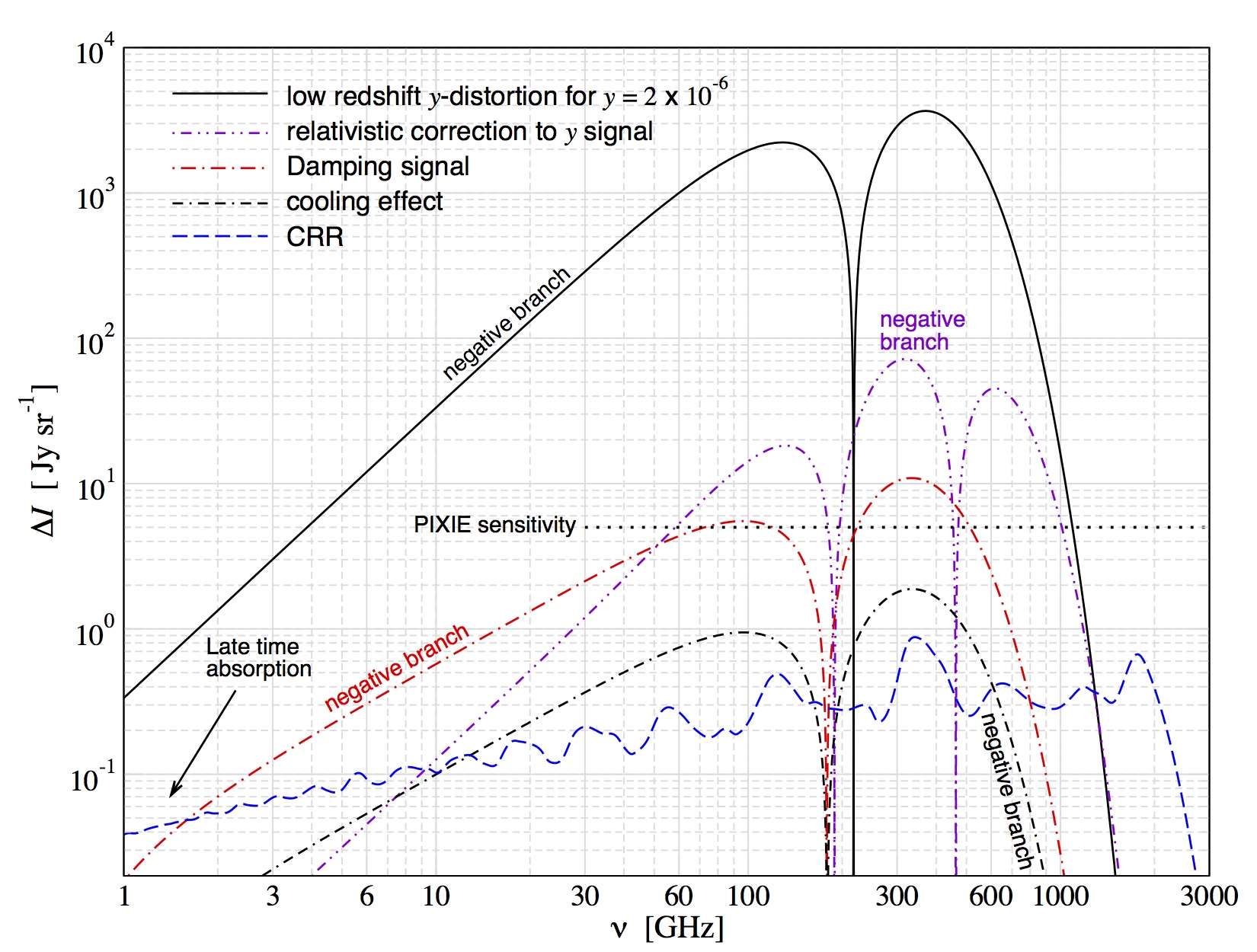ΛCDM distortions

Ever refined cosmological measurements have established the ΛCDM concordance model, with the key cosmological parameters being determined to percent-level precision today. This allows us to make explicit predictions for the spectral distortions of the cosmic microwave background (CMB) created by various well-known processes occurring in the early Universe. The expected signals are summarized in Figure 1, which is taken from Chluba, 2016, arXiv:1603.02496. Below you can also download the data used to prepare this figure.
Fig. 1: Comparison of several CMB monopole distortion signals produced in the standard ΛCDM cosmology. The low-redshift distortion created by reionization and structure formation is close to a pure Compton-y distortion with y ~ 2 x 10-6. Contributions from the hot gas in low mass halos give rise to a noticeable relativistic temperature correction, which is taken from Hill et al., 2015. The damping and adiabatic cooling signals were explicitly computed using CosmoTherm. The cosmological recombination radiation (CRR) was obtained with CosmoSpec. The estimated sensitivity of PIXIE is shown for comparison (dotted line).
-
• Chluba & Sunyaev, 2012, MNRAS, 419, 1294 (arXiv:1109.6552)
-
• Chluba, Khatri & Sunyaev, 2012, MNRAS, 425, 1129 (arXiv:1202.0057)
-
• Hill et al., 2015, PRL, 115, 261301 (arXiv:1507.01583)
-
• Chluba & Ali-Haimoud, 2016, MNRAS, 456, 3494 (arXiv:1510.03877)
-
• Chluba, 2016, submitted to MNRAS (arXiv:1603.02496)
Next generation CMB spectrometers like PIXIE are expected to detect the distortion caused by reionization and structure formation
at extremely high significance. They will also be able to constrain the small-scale power spectrum through the
associated µ-distortion, helping to improve limits on running of the spectral index. Distortions from the recombination era,
adiabatic cooling of matter relative to the CMB and dark matter annihilation require a higher sensitivity than PIXIE in its
current design. The crucial next step is an improved modeling of foregrounds and instrumental aspects. You can download the
data used for Fig. 1 here:
When using this data please refer to the publications mentioned in each file. These include:
For comments or questions please email: Jens@Chluba.de.

